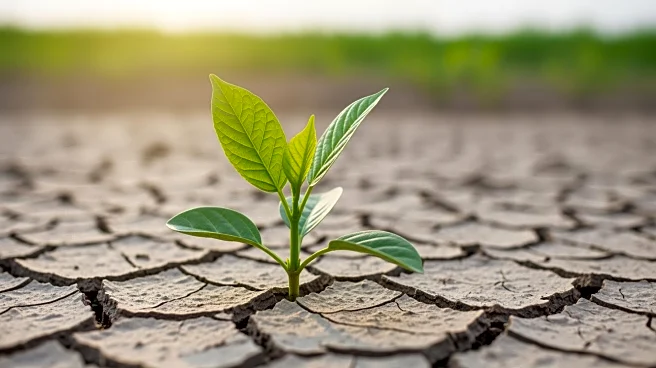What's Happening?
The global market for agricultural biologicals is expected to grow from $14.2 billion in 2024 to over $29 billion by 2030, driven by increasing regulatory pressures, awareness of soil degradation, and consumer demand for organically grown food. North
America leads with a 31.6% market share, supported by a robust organic farming sector and regulatory frameworks. The Asia-Pacific region is experiencing the fastest growth, with a 14.3% CAGR expected from 2024 to 2030, fueled by population growth and food security concerns. Biopesticides account for the largest market share by type, while biostimulants are projected to grow at the fastest rate.
Why It's Important?
The expansion of the agricultural biologicals market reflects a significant shift towards sustainable farming practices, which are crucial for addressing environmental concerns and meeting consumer demand for organic products. This growth presents opportunities for stakeholders in the agricultural sector, including farmers, manufacturers, and policymakers, to invest in innovative solutions that enhance crop yield and resilience. The increased adoption of biopesticides and biostimulants can lead to reduced chemical usage, promoting ecological health and sustainability.
What's Next?
The market is expected to continue its growth trajectory, with advancements in synthetic biology, microbial genomics, and AI in precision farming driving product innovation. Government initiatives, such as India's National Mission for Sustainable Agriculture, will further bolster the adoption of agricultural biologicals. Stakeholders may focus on expanding research and development efforts to improve product efficacy and address challenges related to climate change and food security.
Beyond the Headlines
The shift towards agricultural biologicals may lead to long-term changes in farming practices, encouraging a move away from traditional chemical-based methods. This transition could have ethical and environmental implications, promoting biodiversity and reducing the carbon footprint of agriculture. As consumer awareness grows, there may be increased pressure on companies to ensure transparency and sustainability in their supply chains.













